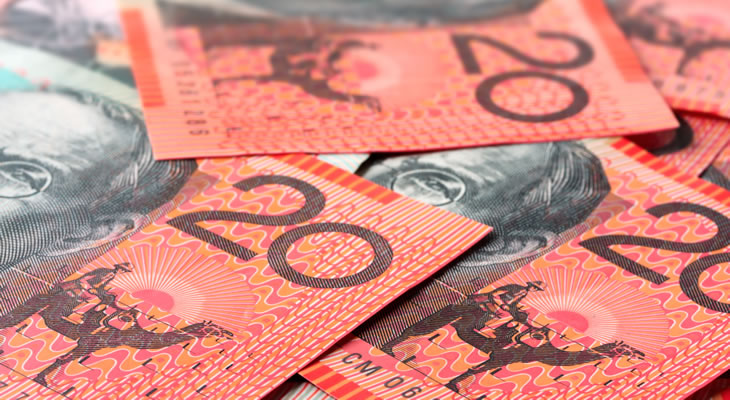- Pound Australian Dollar Climbs to 1.6259 – Australian Dollar Pound Falls to 0.6147
- Mortgage Approvals in July Surge – Pound Bolstered
- Australian Building Approvals Fall – ‘Aussie’ Dollar Hindered by the News
- Iron Ore Prices Drop – GBP AUD Gains Reinforced
The Pound Australian Dollar (GBP AUD) exchange rate climbed today after the number of UK mortgage approvals in July beat expectations, whilst the number of building approvals in Australia fell.
The Bank of England (BoE) announced that the number of loan approvals for the purchase of homes in the UK jumped to a massive 16-month high of 68,689 in July, beating June’s 65,318 figure and indeed the market expectation of 65,500.
This data was quick to impress investors, despite yesterday’s news that house prices fell between July and August, and indeed the warnings of analysts that claim the housing market will only weaken in the years to come (high levels of inflation and low wage growth continues to pinch consumer wallets).
Australian Dollar (AUD) Encumbered by Disappointing Building Approval Figures
Data for Australia, on the other hand, proved disappointing, with the latest building permit figures from the Australian Bureau of Statistics demonstrating a significant drop month-on-month from 11.7% in the previous period to -1.7% in July, though this remains slightly better than the forecast of -3%.
This drop, however, was mostly caused by a fall in approvals for apartments, which fell 6.7% month-on-month, rather than a drop in private housing.
This news is all the more pertinent after Tuesday’s release from the Housing Industry Association, which found that new home sales in Australia had dropped 3.7% month-on-month in July – a cause for concern for some as near-term rate hikes from the Reserve Bank of Australia (RBA) will only be seen as viable if housing demonstrates growth.
Iron Ore and the Australian Dollar – What can be expected for GBP AUD?
Iron ore futures fell over -1% on Wednesday, with falling steel prices dragging them down. Both commodities strongly influence the performance of the Australian Dollar, with iron ore being the nation’s primary export and steel itself requiring iron to produce.
Analyst at Argonaut Securities in Hong Kong, Helen Lau, asserted that ‘prices have gone up quite a lot so sentiment is very fragile’, suggesting that the recent volatility is, in part, due to the latest rapid gains.
Whilst demand for steel in China remains buoyed by its ever-growing property sector, this drop only reinforced Sterling’s gains against the Australian Dollar.
US GDP Growth Rate Beats Expectations, Rallies, AUD Demand Collapses
Also notable today was the recent release of the US GDP figures, with the quarter-on-quarter 2nd estimate growth rate smashing expectations by printing at 3%, up from the previous period’s 1.2%. The 2nd estimate price index, however, printed as forecast at 1%, down from the previous period’s 1.3%.
Because the ‘Aussie’ Dollar is also heavily influenced by the performance of its US counterpart, the resulting rally of the ‘Greenback’ only pushed GBP AUD higher.
GBP AUD and the North Korean Crisis, Risk Aversion in the Markets
The Pound has historically been propelled by the geo-political manoeuvrings of the Democratic People’s Republic of North Korea (DRPK), with every missile launch, for example, pushing markets further and further into a state of risk aversion.
When markets are in this state investors will tend to seek ‘safe-haven’ currencies like the Swiss Franc (CHF) and the US Dollar (USD), with surges in the US Dollar only quelling demand for its ‘Aussie’ cousin.
This morning, following the recent missile launch over the Japanese mainland into the Pacific Ocean, North Korea made clear that this was just the ‘first step in the Pacific operation’, with the intention of ‘pacifying the US Island of Guam’ being cited as their primary mission. If this does indeed continue, then GBP AUD could find itself bolstered even further as markets become increasingly risk averse.


Comments are closed.